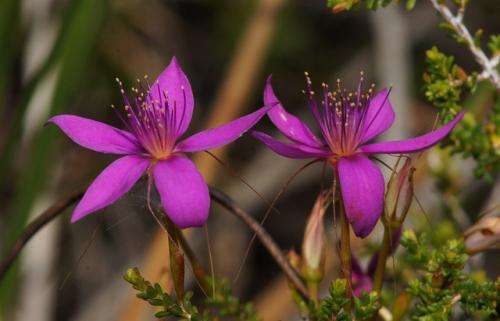Western Australian sandplains in World Heritage bid

WA plant biologists are spearheading a campaign to have sandplains from Shark Bay to Esperance awarded UNSECO World Heritage status.
UWA Professor Hans Lambers says the group has drafted a document addressing the criteria required by UNESCO, such as the plants, animals, history and archaeology of the region, as part of a pitch for the World Heritage listing.
Once the document is finalised they plan to approach the state and federal governments to support the bid, which they believe could be finalised by 2016.
Prof Lambers says the area, which does not include the karri and jarrah forests, is extremely diverse and the greatest biodiversity occurs where the soil is poorest.
"It is a global biodiversity hotspot and there are only 25 of them in the world," he says.
"Everybody thinks of tropical rainforests as being very diverse and they are and I'm not going to poo poo them at all, but most people do now realise that the Kwongan here in the south-west of WA is just as diverse.
"It is a knee-high tropical rainforest really, it's like a coral reef underwater."
Sandplains likened to rainforests and corals
Prof Lambers hopes a new book he has edited, Plant Life on the Sandplains in Southwest Australia, will help pave the way for the World Heritage listing.
The book features contributions from some of the state's best-known plant scientists as well as researchers from the Australian National University and the Smithsonian.
"I think it's really important that people know a lot more about how unique this environment is, how special it is, not just in terms of its beauty but also in terms of its functioning, its economic potential," Prof Lambers says.
"For a whole raft of reasons I think it deserves UNSECO World Heritage status."
Prof Lambers believes World Heritage listing could help boost tourism in the region but will not threaten mining or agriculture, as few mining operations are carried out in the sandplains.
He says the area is comparable to other UNESCO sites.
"I collaborate quite a bit with people in Brazil and they take me to some of their wonderful parks," Prof Lambers says.
"Those parks all have proud signs of 'UNESCO World Heritage listed' and they deserve that but I think our parks deserve exactly the same status and nobody really considered it. It's about time that we changed that."
Prof Lambers says the whole process is likely to take a couple of years.
Provided by Science Network WA



















